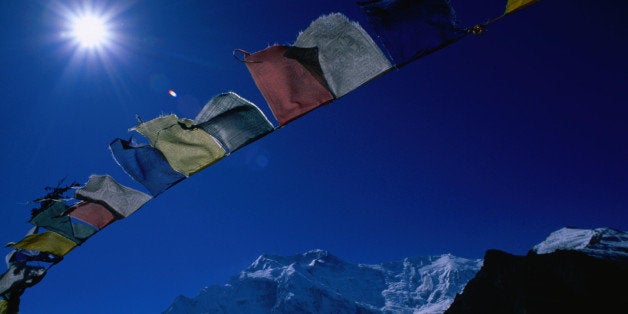
The view from the roof of the world is breathtaking. The air up here is thin but fresh. I live in a large village called Sikles. It's in a remote part of the Annapurna mountain range in Nepal. White capped peaks and blue, blue skies surround us in every direction.
My people, the Gurung tribe, are used to our remoteness. We have to carry nearly everything in here. It takes several miles going up and down steep terrain to reach our perch. It's a good thing we have solid leg muscles. The eco-tourists who visit us soon get used to it.
Heavy monsoon rains, flash floods and frequent landslides make it impossible to build roads or power grids. But we refuse to live in the dark. So we have learned to make the most of what we have: water and gravity.
My home, and those of thousands of my neighbors in the region, now rely on micro hydroelectric generators. Water goes through these small units and the movement provides enough power for an entire village. Even better, it's completely clean energy, so our mountain air stays crisp and clear.
More than 32 generators pepper the mountains in this region now. The electricity they produce is clean, cheap and reliable, and available 24 hours a day. We no longer need to walk miles to buy kerosene or collect firewood. We've also been able to sell a portion back to the government and collect around $USD 18,000 each year for the community. This has improved everyone's livelihoods and created a self-sustaining society.
To go hand in hand with this, we've also installed clean, smokeless cook stoves in everyone's homes to reduce our reliance on forest wood and exposure to harmful fuels. Now even the poorest among us will never go hungry.
That's not all. It has taken us over 20 years, but we have planted over 200,000 trees around our homes. It has strengthened the soil to reduce the threat of landslides during the monsoonal season. Influences from the modern world have also helped with this. We now communicate up and down the mountains with radios and cell phones to warn of flash floods.
Children here go to the local village day care center. It is vital for them to learn about the sustainable ways we have developed to live in harmony with our local environment. Conservation has become an essential part of their curriculum. We want them to know about our achievements and build on them.
I'm now working on other ways to build on our achievements. I've come to New York during Climate Week, to share my story with other indigenous people who are working on sustainable projects, including those at the United Nations Development Programme Equator Prize.
Already there are 30 more communities in my part of the world that are taking hope from our example and installing their own generators and cookers. I want to learn about how other communities are tackling their problems and see what other ideas I can take back to my people, especially to tackle the issue of the snow caps melting and forming glacier lakes.
It takes many years for the Earth to make a mountain. Let alone a mountain range. The Gurung people have a sacred duty to look after our mountains and the forests, lakes, animals and people on them. I want to share that trust with you because, today, we are all called on to look after our land and our people. The climate belongs to all of us, and the solutions are in our hands to make it a better world to live in.